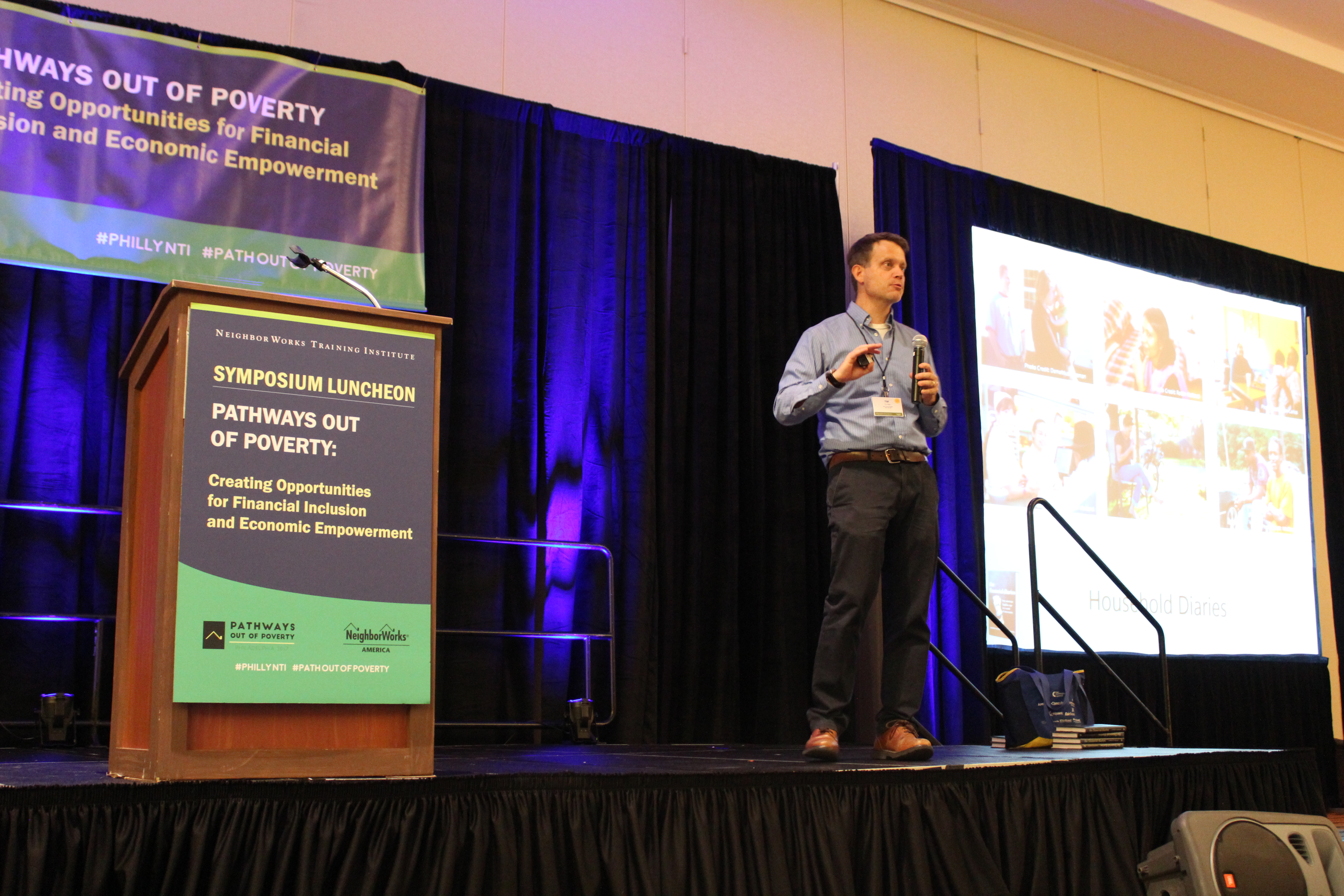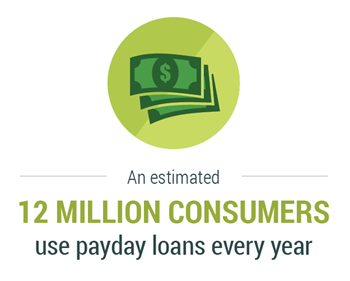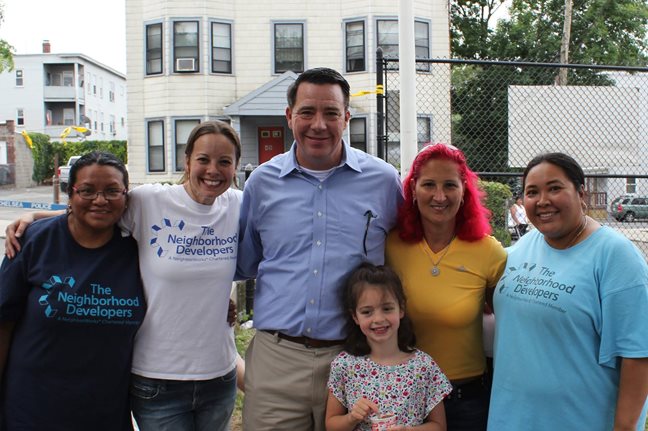“There is a pervasive, entrenched belief in this country that success is totally self-made,” observed Gillian White, a writer and editor for The Atlantic magazine and a panel moderator at NeighborWorks’ symposium at the Philadelphia National Training Institute.
Indeed, much of success is self-made. White describes her great-grandmother, a single mother with very little education who worked as a servant—but climbed out of her rut and eventually retired in her own home with a comfortable pension. But look closer, she recounted, and one finds countless examples of support needed and support offered.
“The white middle class put down roots and grew because the government decided it was an imperative and enacted policies like the GI bill and preferential tax benefits,” noted White. “But too often, that success was won on the backs of people of color. The reality is that it’s really hard to get a stable footing in this country; in fact, it can be almost impossible if the systems and the programs and the people aren’t there to offer support along the way.”
The symposium at which White spoke was titled, “Pathways Out of Poverty: Creating Opportunities for Financial Inclusion and Economic Empowerment.” Here are a few of the steps toward solutions offered by the various speakers:
Cash flow matters

The diaries project tracked 235 low- and moderate-income households over the course of a year to collect highly detailed data on how families manage their finances on a day-to-day basis.
“It was hard to find families to participate, to track them, for them to find the time,” recalled Ogden. “It was hard to have these conversations, but as we started to build an underlying level of trust, we started to get real answers.”
The researchers found that for about half the year, these households’ income was 25 percent above or below the average, due to jobs that didn’t offer steady hours or pay. For example, households earning between the supplemental poverty measure (SPM) and 1.5 times that, 94 percent experienced poverty for at least four months of the year. For households earning twice the SPM, poverty “visited” for three months during the year.
“There was a serious mismatch between their income and expenses that they couldn’t control,” explained Ogden. “The typical narrative is that these families are overspending and not saving for later. But the truth is that they are saving—but for the next dip. It is critical to look at cash flow and not just income and assets when counseling these families.”
Jeremy Stremler, Associate for Resource Development and Strategic Planning at Brownsville (Texas) CDC, says his organization is working to help with these dips by offering small-dollar loans to carry individuals and families through emergencies.
“In this area of Texas, by the Mexican border, there is no public transportation if you can’t pay to fix the car—and that jeopardizes jobs,” noted Stremler. “It’s a time that can push people into a cycle that deepens poverty. That’s where we come in.”
 The nonprofit’s Community Loan Center has partnered with 73 businesses to date, offering their more than 20,000 employees loans of $400-$1,000—payable over 12 months at an interest rate of 18 percent. No credit history or collateral is required; there are no prepayment penalties; and free financial counseling is offered. According to Stremler, about a third of the covered employees take out loans, averaging about $800. Payments are made through pay deductions.
The nonprofit’s Community Loan Center has partnered with 73 businesses to date, offering their more than 20,000 employees loans of $400-$1,000—payable over 12 months at an interest rate of 18 percent. No credit history or collateral is required; there are no prepayment penalties; and free financial counseling is offered. According to Stremler, about a third of the covered employees take out loans, averaging about $800. Payments are made through pay deductions.However, Ogden pointed out that there also must be a campaign to create and sustain jobs that offer predictable schedules and living wages.
“Our economy looks more like a developing country, with winners and losers and a big gap in between,” noted Ogden. “The upper middle class is shutting others out through policies like exclusionary zoning and under-investment in public schools.”
Ted Archer, Vice President of Global Philanthropy at JPMorgan Chase & Co., added that it’s not just families and individuals struggling with cash flow.
“Small businesses account for 64 percent of new jobs globally,” he noted. “And on average, they have only 27 days of cash. We need to help them become stable and sustainable. If we don’t, we leave wealth on the table.”
Bank accounts matter
Amelia Erwitt, Managing Director of the Cities for Financial Empowerment (CFE) Fund, described her group’s findings—that, assuming all else is equal, creation of bank accounts is the factor that most drives repeat financial counseling visits and growth of savings. In fact, households that set up their first bank accounts were almost 40 percent more likely to improve their credit ratings and eight times more likely to start saving money.That’s why CFE has worked to draft and disseminate standards for creating accessible bank accounts, including such features as minimal opening deposit requirements ($25 or less) and no overdraft fees. Another of its initiatives is to build education on opening and maintaining a bank account—along with actual set-up—into summer camps for youth
 Stephanie Shull from The Neighborhood Developers (TND) in Chelsea, Massachusetts, added that new immigrants often perceive banks as unsafe due to their past experiences, and need a customized approach. And Carla Dickstien, who oversees policy work for Coastal Enterprises in Maine, suggests nonprofits and banks in areas with a wealth of new Americans offer a “sharia loan”—which caters to Muslims whose religion does not allow them to pay interest. Instead, the costs are structured as fees
Stephanie Shull from The Neighborhood Developers (TND) in Chelsea, Massachusetts, added that new immigrants often perceive banks as unsafe due to their past experiences, and need a customized approach. And Carla Dickstien, who oversees policy work for Coastal Enterprises in Maine, suggests nonprofits and banks in areas with a wealth of new Americans offer a “sharia loan”—which caters to Muslims whose religion does not allow them to pay interest. Instead, the costs are structured as fees“We need to talk the language of low-income people and other special populations,” and even adjust the way we look,” Shull said, suggesting bankers ditch the suits.
Layer programs
Shull noted that massive programs are not necessary; rather, smaller, more focused innovations can be highly effective if they are “layered” with services offered by other players in the community.For example, TND’s CONNECT center offers the services of five agencies focused on improving the financial mobility of low-income families—two nonprofits, a credit union, a community college and a career center. TND plays two roles for CONNECT: In addition to offering financial capability services, it is the “glue” that binds the partners together. Initially, this meant establishing a governance and accountability system that holds each partner to shared goals and commitments. To avoid culture clash, its first task was to make sure the partners understood each other’s priorities, particularly regarding performance standards.
“So much of success depends on making the services offered truly accessible,” noted Shull.
Think city-wide
Erwitt adds: “We need systems change at a level broader than the neighborhood. Financial instability is at the root of most families’ problems. So, cities need to focus on this.”Her organization has found that financial counseling works well as a public service: City government is a trusted voice for residents amidst a sea of scams and complicated financial choices, and a natural convener of partners to enhance program sustainability and market services at scale. In addition, she said, financial counseling is a natural fit with other social services, which can be coordinated through referrals or partnerships. CFE calls financial counseling the “Supervitamin Effect.”
Restructure
And then there are those who think we should begin re-thinking how we structure new businesses to better incorporate the needs of their employees and community residents. Valerie Piper, Vice President of Engaged Practice at The Democracy Collaborative, advocated for more cooperatively owned enterprises. One example she cited is a local laundry with 140 employees, 57 percent of whom are “owners.”“We can create more jobs through profit sharing, by re-engineering,” she said. The Democracy Collaborative has begun this process by working with anchor institutions and businesses in select cities and helping them examine how and where they are sourcing their employees and supplies. For example, if a food service needs a lot of shredded carrots, why not support an employee-owned subcontractor?
“We need to get serious about diversity in so many different ways,” Piper said.

